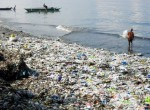 How many bottles of water do you drink every month? What about in one week? How much do you consume in a single day? Did you know that in the United States alone, over 50 billion bottles of water are consumed annually? And of those more than 50 billion bottles less than 20% are recycled? But the bottled water dilemma is about much more than a lack of recycling. Did you ever stop to think where your bottled water comes from? Have you ever wondered how bottled water is obtained by companies like Coca-Cola, Pepsi, and Nestle? What about the plastic for the water bottles; have you ever considered where and how the bottles are manufactured? And lastly, have you ever been concerned about the possible ramifications to your health from the water or the bottles?
How many bottles of water do you drink every month? What about in one week? How much do you consume in a single day? Did you know that in the United States alone, over 50 billion bottles of water are consumed annually? And of those more than 50 billion bottles less than 20% are recycled? But the bottled water dilemma is about much more than a lack of recycling. Did you ever stop to think where your bottled water comes from? Have you ever wondered how bottled water is obtained by companies like Coca-Cola, Pepsi, and Nestle? What about the plastic for the water bottles; have you ever considered where and how the bottles are manufactured? And lastly, have you ever been concerned about the possible ramifications to your health from the water or the bottles?
I think most bottled water consumers believe that the water they are drinking is pure and fresh, having been drawn from a natural mountain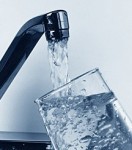 spring in an area that is free of environmental contaminates. For example, Aquafina’s label shows snowcapped mountains and the words “Pure Water, Perfect Taste.” However, if you read the entire label you will also find P.W.S. which stands for Public Water Source. In 2007, the Outside the Bottle Campaign urged companies like Pepsi to change the labels of their bottled water to reflect the true origin of their product. PepsiCo spokeswoman Michelle Naughton stated, “If this helps clarify the fact that the water originates from public sources, then it’s a reasonable thing to do.” In short, your $1.50 U.S. bottle of pure and tasty water is glorified, filtered tap water. In fact, it is estimated that almost 75% of all bottled water manufactured around the world is purified tap water simply packaged in a to-go bottle.
spring in an area that is free of environmental contaminates. For example, Aquafina’s label shows snowcapped mountains and the words “Pure Water, Perfect Taste.” However, if you read the entire label you will also find P.W.S. which stands for Public Water Source. In 2007, the Outside the Bottle Campaign urged companies like Pepsi to change the labels of their bottled water to reflect the true origin of their product. PepsiCo spokeswoman Michelle Naughton stated, “If this helps clarify the fact that the water originates from public sources, then it’s a reasonable thing to do.” In short, your $1.50 U.S. bottle of pure and tasty water is glorified, filtered tap water. In fact, it is estimated that almost 75% of all bottled water manufactured around the world is purified tap water simply packaged in a to-go bottle.
But where exactly does bottled water come from, and how is it obtained? A 2009 documentary entitled Tapped set out to answer these very questions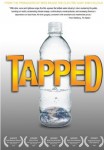 regarding the true source of bottled water, as well as the role bottled water plays in our health and environment. Cities throughout America, both large and small, have seen an increased presence of water-hauling tanker trucks from companies like Coca-Cola and Nestle tapping into public water systems. In some cases, a $200 U.S. permit was all that was needed to obtain unlimited water from a local supply with little to no regulation. Even in times of drought when water use mandates were placed on residents, water was continually taken at the same frequency and quantity. You can begin to understand why local town residents were extremely concerned because of their water supply being depleted.
regarding the true source of bottled water, as well as the role bottled water plays in our health and environment. Cities throughout America, both large and small, have seen an increased presence of water-hauling tanker trucks from companies like Coca-Cola and Nestle tapping into public water systems. In some cases, a $200 U.S. permit was all that was needed to obtain unlimited water from a local supply with little to no regulation. Even in times of drought when water use mandates were placed on residents, water was continually taken at the same frequency and quantity. You can begin to understand why local town residents were extremely concerned because of their water supply being depleted.
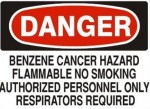 Currently, there are no specific Food and Drug Administration (FDA) regulations on bottled water manufacturing. Independent studies have shown that a number of toxins have been identified in several brands of bottled water taken from supermarket shelves. Bacteria, disinfectants, carcinogens such as benzene and toluene, endocrine-disrupting compounds, and toxins leached out of the plastic bottles themselves were but a few of the contaminants found. Where municipalities responsible for tap water in public water supplies are required to provide consumers with information regarding possible contaminants, filtration processes, and the actual water source, bottled water companies do not. For me personally the most shocking chemicals found in bottled water are those that are causing cancer and endocrine disruption. More times than not, the endocrine disrupting compounds are estrogen-like in action. Not only can these pseudo-estrogens cause negative health effects for pregnant women, but also for both male and female prepubescent children; estrogens play a primary regulatory role during puberty. Moreover, other toxins found in samples have been linked with birth defects. In addition, water bottles, as well as other food and beverage containers, are commonly made from polyethylene terephthalate (PET), a product derived from petroleum.
Currently, there are no specific Food and Drug Administration (FDA) regulations on bottled water manufacturing. Independent studies have shown that a number of toxins have been identified in several brands of bottled water taken from supermarket shelves. Bacteria, disinfectants, carcinogens such as benzene and toluene, endocrine-disrupting compounds, and toxins leached out of the plastic bottles themselves were but a few of the contaminants found. Where municipalities responsible for tap water in public water supplies are required to provide consumers with information regarding possible contaminants, filtration processes, and the actual water source, bottled water companies do not. For me personally the most shocking chemicals found in bottled water are those that are causing cancer and endocrine disruption. More times than not, the endocrine disrupting compounds are estrogen-like in action. Not only can these pseudo-estrogens cause negative health effects for pregnant women, but also for both male and female prepubescent children; estrogens play a primary regulatory role during puberty. Moreover, other toxins found in samples have been linked with birth defects. In addition, water bottles, as well as other food and beverage containers, are commonly made from polyethylene terephthalate (PET), a product derived from petroleum.
Currently, less than 20% of all water bottles worldwide are recycled; there are over 100 billion water bottles that are either placed in landfills or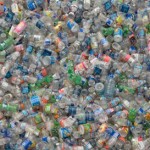 carelessly tossed into wild areas and waterways. It is estimated that it would take over 500 years to completely break down PET made bottles. Sadly, discarded plastic bottles have found their way into every ecosystem including our oceans.
carelessly tossed into wild areas and waterways. It is estimated that it would take over 500 years to completely break down PET made bottles. Sadly, discarded plastic bottles have found their way into every ecosystem including our oceans.
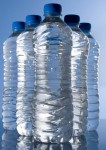 So what can we do? While I completely agree that more research needs to be done regarding the health aspect of bottled water consumption, I think that what is being done to the environment to obtain water for bottling and by those discarded bottles is a known threat and absolutely unacceptable. Knowing that bottled water is collected from the very same public water that flows freely from our taps should encourage us to use Nalgene bottles that are bisphenol A-free (BPA) and reusable. Reusable bottles save us time and money, as well protects our environment, and could be preventative against adverse health problems associated with bottled water use. I do acknowledge that during times of natural disasters or in human conflict zones where clean water cannot be obtained, bottled water can be lifesaving; however, this is not the case for 90% of the bottled water consumed annually. Isn’t important for you to make a change?
So what can we do? While I completely agree that more research needs to be done regarding the health aspect of bottled water consumption, I think that what is being done to the environment to obtain water for bottling and by those discarded bottles is a known threat and absolutely unacceptable. Knowing that bottled water is collected from the very same public water that flows freely from our taps should encourage us to use Nalgene bottles that are bisphenol A-free (BPA) and reusable. Reusable bottles save us time and money, as well protects our environment, and could be preventative against adverse health problems associated with bottled water use. I do acknowledge that during times of natural disasters or in human conflict zones where clean water cannot be obtained, bottled water can be lifesaving; however, this is not the case for 90% of the bottled water consumed annually. Isn’t important for you to make a change?
